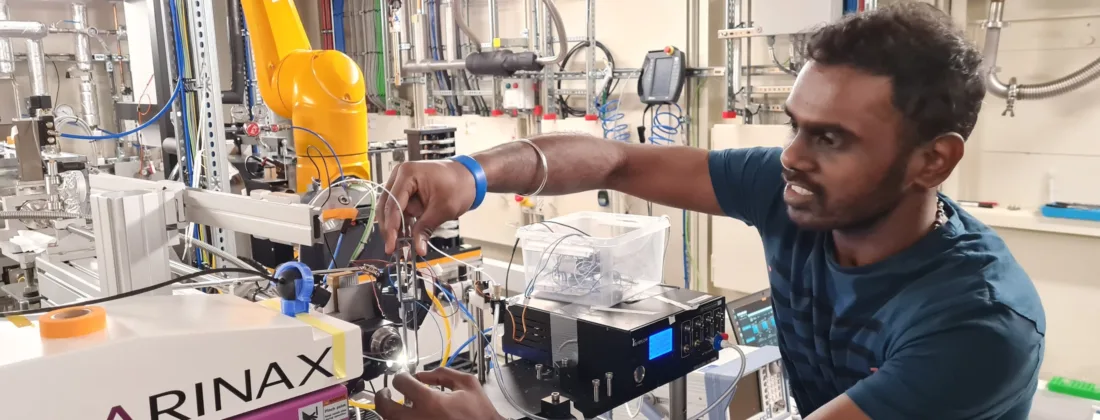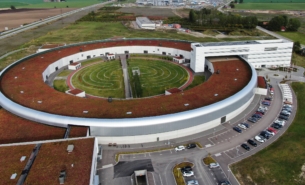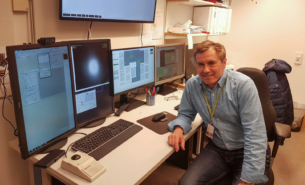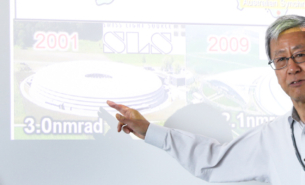The innovative project "Acoustofluidic Crystallography" (AFX) is set to revolutionize the field of serial crystallography (SX) by introducing a novel sample delivery method that promises to enhance the efficiency and reliability of experiments conducted at synchrotrons and X-ray free-electron lasers (XFELs). This cutting-edge research is a collaborative effort involving KTH Royal Institute of Technology, DESY, and MAX IV, funded by the LEAPS-INNOV initiative (GA: 101004728).
The LEAPS-INNOV innovation pilot aims to develop the cutting-edge technology to support groundbreaking research and drive innovation, while strengthening the European scientific network and establishing long-lasting industry connections. As part of these efforts, a dedicated Work Package for Co-Creation, WP9, has been implemented. With an aim to establish new co-creation structures allowing for joint development of key technologies and novel access modes through seed funding for pilot implementation studies, a call for project proposals was processed. The result was a selection of 3 co-creation pilots, including the AFX project.
Read more about the LEAPS-INNOV initiative (GA: 101004728).
The essence of AFX
At the heart of AFX lies the integration of acoustofluidics with state-of-the-art injection nozzles, aimed at reducing sample consumption and preventing clogging—a common issue in current SX methods. The project leverages a piezoelectric actuator to generate a 2D ultrasonic standing wave, which focuses microcrystals into a single line within a silica capillary. This setup, combined with a flow cell or dual flow-focusing nozzle (DFFN), ensures precise and efficient sample delivery.
“We are combining acoustics with microfluidics to improve sample delivery of protein crystals,” explained Jonas Sellberg, coordinator of the AFX project. “Our goal is to reduce sample waste and make delivery more reliable, preventing crystals from getting trapped during the process.”
Practical applications and future prospects
The AFX prototype is expected to serve a wide range of applications, particularly in structural biology. Researchers anticipate that once the technique proves stable and robust, it will be invaluable for experiments involving scarce and hard-to-prepare samples. The project aims to install and optimize the AFX device at MAX IV’s BioMAX and MicroMAX beamlines, with plans to extend its use to PETRA III‘s P11 beamline.
“This technique can in principle be applied to any sample that is scarce and hard to prepare,” continued Jonas. “We are still examining which types of crystal suspensions it works the best with, but the potential applications are vast.”
Collaboration and training
The AFX project marks the beginning of a significant collaboration between MAX IV, KTH and DESY, focused on developing and refining this groundbreaking technique. Although the project was initiated specifically for the LEAPS-INNOV initiative, it has already set the stage for future collaborations and training programs.
“MAX IV was instrumental in guiding the direction of our development from the very beginning,” noted Jonas. “We plan to offer training for potential users once the device is available at MicroMAX. There’s great potential to continue developing this technique and create new devices with more advanced functionality.”
The introduction of AFX not only promises to advance the field of SX but also paves the way for more efficient and reliable structural biology research, ultimately contributing to health research and other scientific domains.
Read more on the AFX project on the LEAPS-INNOV webpage.
People:
- Jonas Sellberg, Associate Professor in x-ray science and technology at KTH, coordinator and proposer of the AFX project
- Martin Wiklund, Professor in acoustofluidics at KTH, co-proposer of the AFX project
- Björn Hammarström, researcher at KTH, co-proposer of the AFX project
- Varun Kumar Rajendran, post-doctoral fellow at KTH, employed through the AFX project




